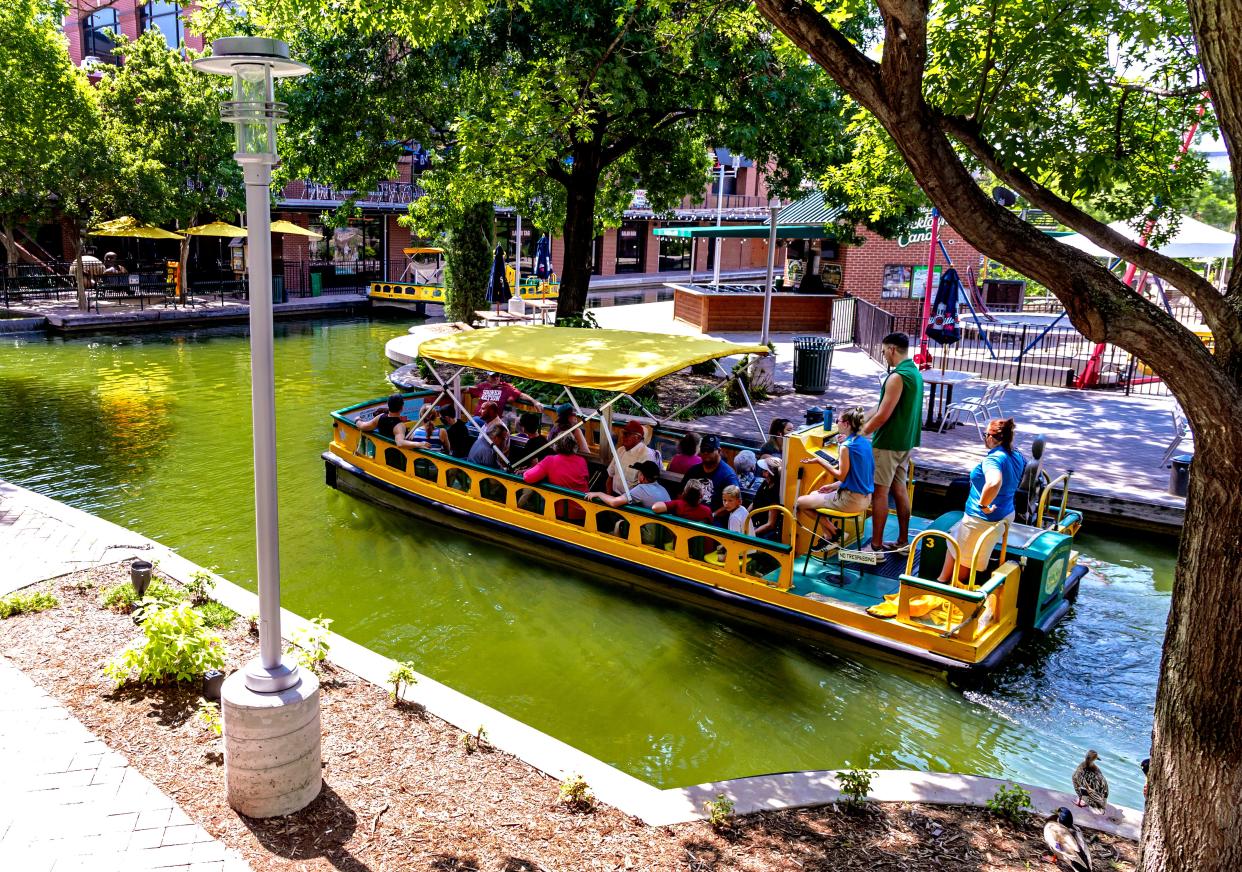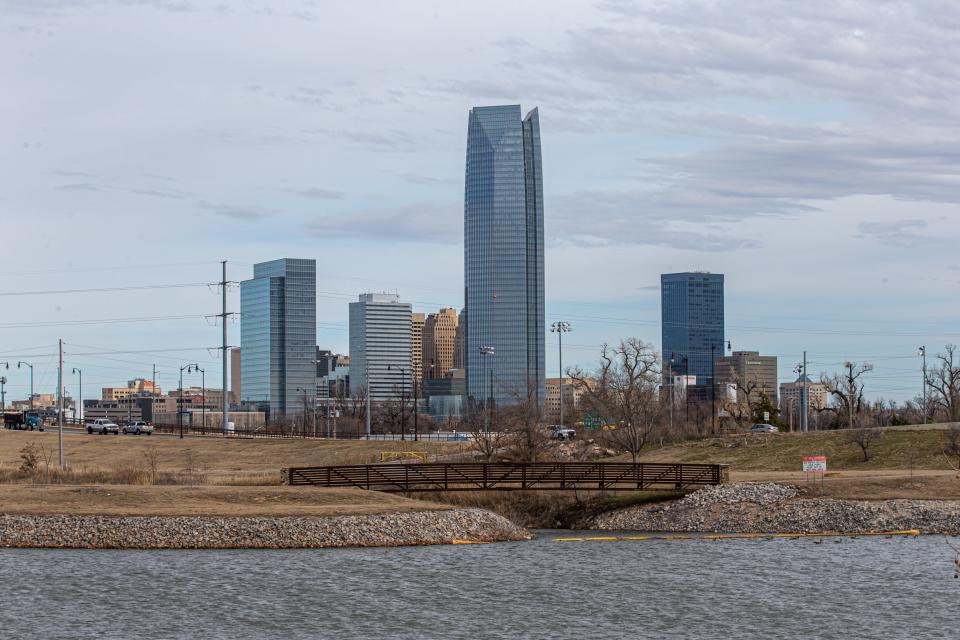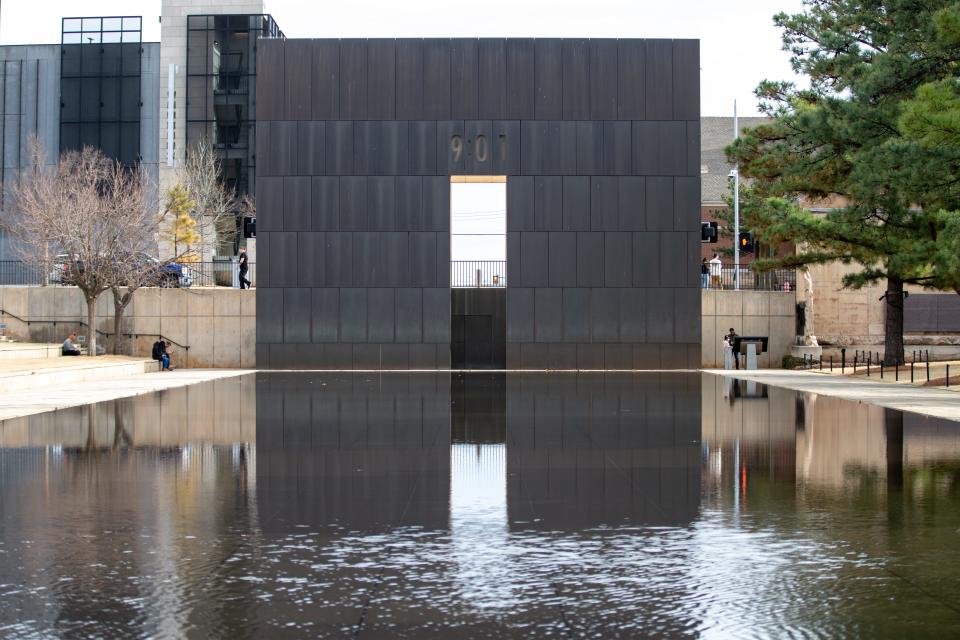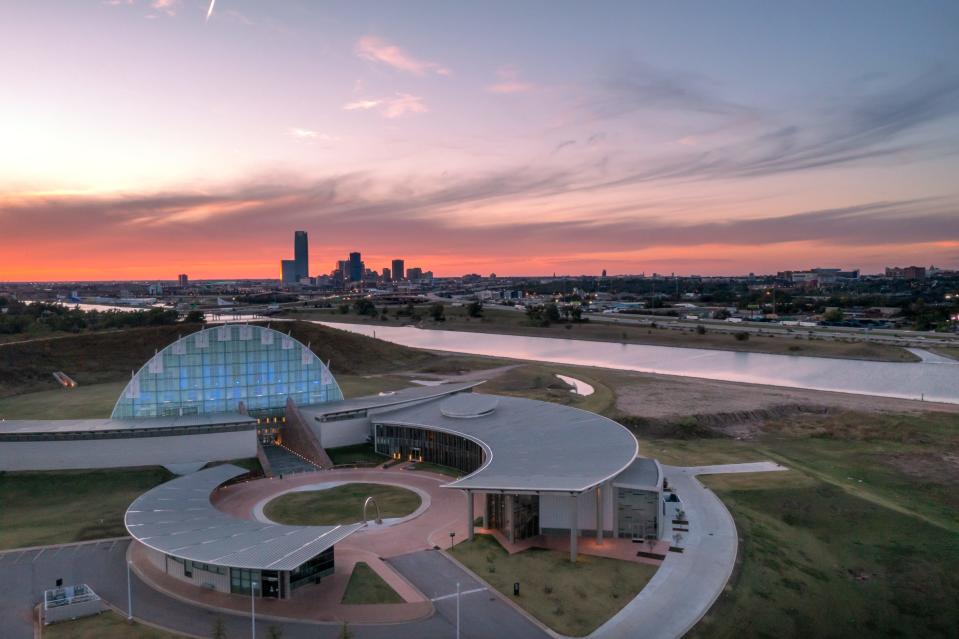Leaders have high hopes for OKC's tourism industry, which generated $3.8 billion in 2021

- Oops!Something went wrong.Please try again later.
A young man born and raised in central Oklahoma left with his college degree and a passion for the hospitality industry, believing he wouldn't be able to thrive in the state.
That same man, Zac Craig, watched from afar as his home state and its capital city evolved to become a destination over the years.
Today, Craig is the president of Oklahoma City's Convention and Visitor's Bureau, which recently announced the tourism industry generated a $3.8 billion economic impact for Oklahoma City in 2021. In that year, which saw lingering pandemic effects on the industry, 31,569 jobs were sustained by tourism in Oklahoma City, according to the study by Oxford's Tourism Economics.
This is the first time the bureau has partnered with the company, and Craig said he is excited to see them replicate it for 2022 data.
"I think back to when I left," Craig said. "And I truly believe as kids are coming up through the ranks right now, they do have a future in our city, whether it's restaurants, hotels or other things."

Many in the tourism industry point to one thing that changed Oklahoma City's trajectory — the passing of the first Metropolitan Area Projects.
In 1993, voters approved a penny sales tax that generated more than $363 million in sales tax and interest over five-and-a-half years and paid for projects like the Bricktown Ballpark, Cox Convention Center and Chesapeake Energy Arena. The city is now on the fourth iteration of MAPS, with upcoming projects like a multipurpose stadium, a new fairgrounds coliseum and the Clara Luper Civil Rights Center.
"I think we're seeing the payoff of that, two decades later," said Tina Gilliland, chief experience officer for the Oklahoma City National Memorial & Museum. "We've invested in ourselves, so we've improved not only our quality of life, but we've also improved the attractiveness of our city and our state as a destination."
Oklahoma City had to reinvent itself before it became attractive to visitors
The Bricktown Canal also was funded by the first MAPS, and when it was completed in 1999, the Florida-owned Bricktown Water Taxi began giving tours of what was then a canal surrounded mostly by dirt and a single restaurant.
Chad Huntington, who bought the company in 2019, started driving the water taxis part-time in 1999 while he also served as the executive director of Automobile Alley. Huntington said it was a perfect fit for him to drive a boat and be able to talk to riders about how Oklahoma City was reviving its downtown.
Today, the taxis give rides mostly to visitors, whether that's from other parts of the state, across the country, or, before the pandemic, international visitors.
Huntington often jokes that the taxis are "the most touristy thing in the most touristy area of Oklahoma City."
But when Huntington became general manager of Bricktown Water Taxi and began marketing Oklahoma City as a destination at travel shows, he said he was met with a lot of "really ugly comments" from people who thought Oklahoma City had nothing to offer.
The city knew it had to "reinvent itself," he said, and through MAPS and other developments, it became a place its residents loved and were proud of before it could convince outsiders to visit.
"Why would you want to visit a place that locals don't even want to live?" Huntington said.
Today, Oklahoma City is the 'star of the show' for the state's tourism industry
Lt. Gov. Matt Pinnell, who also serves as secretary of tourism, wildlife and heritage on Gov. Kevin Stitt's Cabinet, said Oklahoma City has come a long way in proving that perceptions that Oklahoma is just flat land, that there's nothing worth visiting, "couldn't be further from the truth."
In fact, he called Oklahoma City the "star of the show" in terms of Oklahoma's tourism industry.
In 2021, 21.4 million people visited Oklahoma City, which Craig said is about a 93% return to pre-pandemic visitor volume. They spent about $2.3 billion in direct travel spending, with half of that coming from food, drinks and retail. Lodging made up 16% of spending, recreation and entertainment 18% and transportation 15%.
Pinnell said Oklahoma City, and the state as a whole, has learned to play to its strengths when it comes to attracting visitors.
"We're an authentic tourism destination: Native American history, Route 66, the Chisholm Trail, these big urban areas, but also small-town charm," Pinnell said. "We're playing to what we do well, and if we continue to do that, while at the same time modernizing our cities like Tulsa and Oklahoma City are doing, I think we can continue to generate record revenue off of our tourism industry."
Oklahoma City, through the Convention and Visitors Bureau, has branded itself "The Modern Frontier," with attractions like the Boathouse District, Scissortail Park, the new Convention Center, the National Cowboy & Western Heritage Museum and the brand-new First Americans Museum.
The city also has invested in neighborhoods and the creation of districts as destinations, including the Paseo Arts District, the Plaza District, the Asian District, Uptown and Midtown. Pinnell called these districts "really authentic" and "fun."
Oklahoma City is also home to events like the Oklahoma City Memorial Marathon — which was capped at 12,000 runners in 2021 due to the pandemic, but averaged 24,000 to 25,000 runners before 2020 — and is known as the "Horse Show Capital of the World" thanks to the OKC Fairgrounds' Jim Norick Arena.

The top attraction in Oklahoma City, according to Tripadvisor, is the Oklahoma City National Memorial & Museum. Gilliland said the museum focuses on its core mission, part of which is to educate people on the impact of violence.
"Everything we do is core to that, and the rest just happens," Gilliland said, including being a top tourist attraction in the city. Anecdotally, Gilliland said they do hear from visitors that come to Oklahoma City specifically to see the memorial and museum.
OKC's tourism industry heading 'true north'

For the everyday resident, Oklahoma City's tourism industry may fly under their radar, Huntington said.
But that doesn't mean the people of Oklahoma City aren't reaping the benefits, he added. More than $311 million was generated in state and local tax revenues, according to the report.
"They come here, and they bring cash and they drop it off," Huntington said. "And they leave ... These are people who don't really utilize the services that we as citizens count on. And so really what they're doing is they're bolstering our quality of life."
With upcoming developments like the OKANA Resort and the Blessed Stanley Rother Shrine expected to continue attracting new visitors, Craig said he sees a bright future.
"The trajectory for Oklahoma City in the visitation economy is just true north," Craig said.

Pinnell said he sees continued growth for Oklahoma City, and said something the city and state must continue fostering is relationships with the 39 tribes in Oklahoma.
It's thanks to a partnership between the city of Oklahoma City, the state and the Chickasaw Nation that the First Americans Museum opened after decades of delay, and that the OKANA Resort is under construction. In Tulsa, Cherokee Nation partners closely with Visit Tulsa, Pinnell said.
"No one can do what we can do in Oklahoma when it comes to this relationship between our sovereigns and the state," Pinnell said.
This article originally appeared on Oklahoman: OKC tourism industry generated $3.8 billion for the economy in 2021

